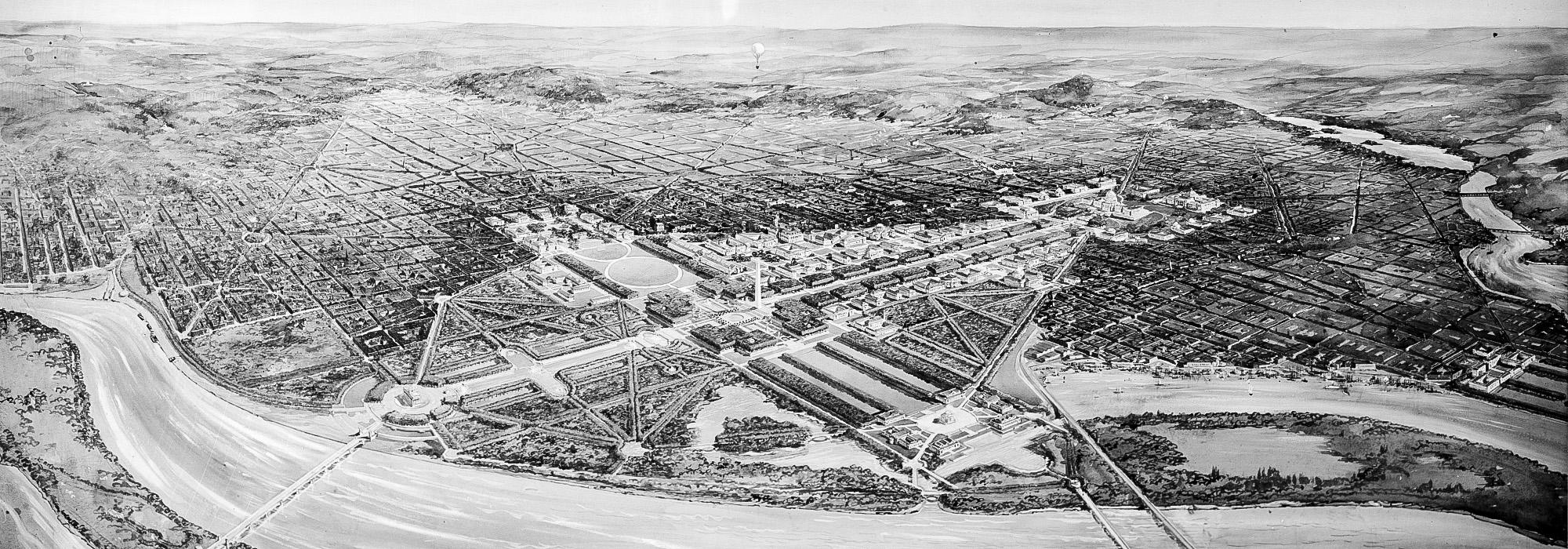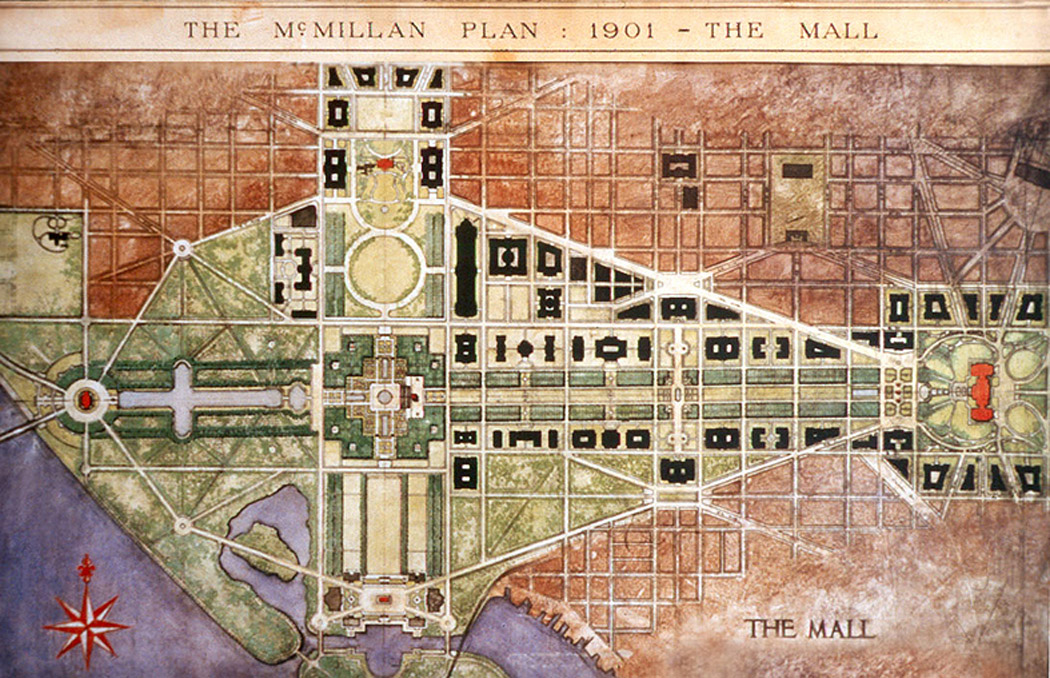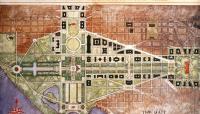Landscape Information
The McMillan Plan is the name given to the several recommendations made in a report produced in 1902 by the Senate Park Commission for improving the design and appearance of Washington, DC, particularly its historic core. The commission, formed in 1901, was chaired by Senator James McMillan of Michigan and included architects Daniel Burnham and Charles McKim, landscape architect Frederick Law Olmsted, Jr., sculptor Augustus Saint-Gaudens, and, acting as its secretary, Charles Moore. With the exception of McMillan and Moore, all had been involved to varying degrees in planning the World’s Columbian Exposition of 1893, which inaugurated the City Beautiful ideal in America, whose tenets are clearly expressed in the Commission’s report. It sought, in effect, to restore and amplify Pierre Charles L’Enfant’s original plan for the city with the formal grandeur of an extended, cruciform National Mall, framed symmetrically by elms and punctuated by monumental neoclassical architecture in the Beaux-Arts manner. The report also proposed a system of parks and parkways that would incorporate and memorialize the Civil War-era fortifications encircling the city (subsequently known as the Fort Circle Parks). While the McMillan Plan was never formally adopted per se, many of its recommendations materialized piecemeal, mostly before World War II: slums near the core were cleared and railroad tracks that crossed the eastern Mall were removed, thereby re-connecting the Capitol to a narrowed greensward, extending westward and eventually anchored by the Lincoln Memorial. Efforts to create the outlying system of parks and parkways, however, fell initially to a cash-strapped local government and have met with varying degrees of success.






















